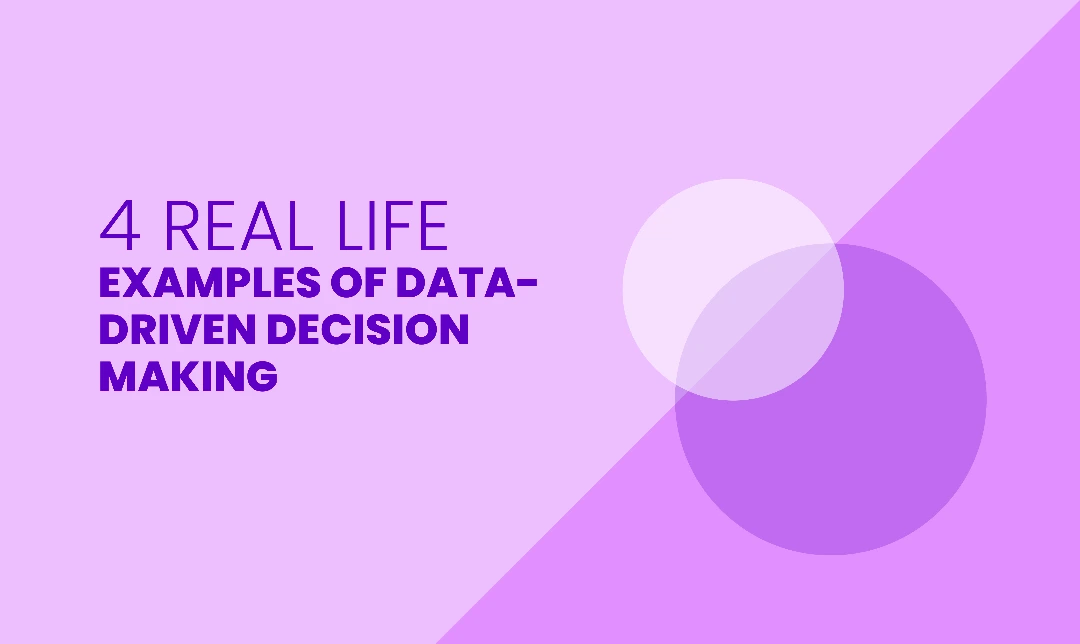In today’s competitive digital landscape, growing your brand requires more than just creativity—it demands strategy powered by data. Relying on guesses or trends without evidence can lead to missed opportunities and wasted resources. That’s where data-driven decisions come in. By using real insights and analytics, you can make smarter moves that drive brand growth, improve customer engagement, and increase ROI.

Why Data-Driven Decisions Matter for Brand Growth
- Whether it’s clicking on a Facebook ad, browsing your website, signing up for a newsletter, or completing a purchase—each interaction provides valuable insights into customer behavior. This information is more than just numbers; it’s a direct reflection of what your audience wants, needs, and expects.
- When you collect and analyze this data effectively, you uncover powerful patterns and trends. You can identify which products are most popular, which content gets the most engagement, and what times of day your audience is most active. Without this information, you’re just guessing. With it, you can make informed, strategic decisions that actually move your brand forward.
- Instead of relying on gut feelings or outdated assumptions, data helps you see what’s really happening. You gain a clear view of what’s working—and what’s not—so you can focus your energy and budget on actions that deliver results.
- Here are some key benefits of using data-driven decisions in your brand strategy:
-
✅ Targeting the Right Audience
- Data helps you understand who your ideal customers are—based on their interests, demographics, location, and online behavior.
-
✅ Optimizing Marketing Campaigns
- By tracking key performance metrics like click-through rates, conversion rates, and bounce rates, you can see which campaigns perform best. This lets you refine your messaging, design, and strategy to get better results over time.
-
✅ Improving Customer Experience
- Data reveals where customers might be facing problems—like a confusing checkout process or slow-loading pages. Fixing these issues based on real feedback can lead to higher satisfaction and loyalty.
-
✅ Predicting Trends and Behaviors
- With the right tools, you can use historical data to forecast future behavior. This helps you stay one step ahead—whether that means preparing for increased demand or adjusting to changing customer preferences.
-
✅ Boosting Overall Performance and Revenue
- Ultimately, data-driven decisions lead to smarter investments. You spend less on tactics that don’t work and more on those that do—leading to better returns and faster brand growth.

How to Use Data to Expand Your Brand
Using data effectively isn’t just about collecting numbers—it’s about turning those numbers into meaningful actions. When you understand what your data is telling you, you can make smarter decisions that directly contribute to brand growth. Here’s how you can harness the power of data to expand your brand:
1. Understand Your Audience Deeply
Your brand can only grow if you truly understand the people you’re trying to reach. Data helps you paint a clear picture of your audience—who they are, what they like, how they behave, and what drives their decisions.
Use tools like Google Analytics, Meta (Facebook/Instagram) Insights, email marketing reports, or even customer surveys to gather demographic data (like age, gender, and location), behavioral data (like pages visited, time spent, and click patterns), and psychographic data (like interests and lifestyle preferences).
Knowing these details allows you to:
- Segment your audience more precisely
- Tailor your content to match audience expectations
2. Measure What Matters
Not all data is equally valuable. To truly grow your brand, focus on Key Performance Indicators (KPIs) that align with your business goals.
For example:
- Website traffic shows brand visibility
- Conversion rates reflect campaign effectiveness
- Bounce rates reveal user experience issues
- Customer lifetime value (CLV) helps assess long-term relationships
- Engagement rates measure content relevance
Tracking these KPIs helps you evaluate performance, identify gaps, and make better-informed decisions. It also ensures that every marketing effort supports your overall brand strategy.
3. Test and Optimize Campaigns
The best way to improve is through experimentation. With A/B testing (also called split testing), you can test variations of your campaigns—different headlines, images, email subject lines, call-to-actions, or ad creatives—and compare results.
For instance:
- Which email subject line gets more opens?
- Does a red button get more clicks than a green one?
- What type of social media post gets more shares?
By testing and learning from results, you move from guesswork to continual optimization. This leads to higher performance and smarter marketing over time.
4. Personalize the Customer Experience
Today’s customers expect more than generic content—they want to feel understood and valued. Data makes personalization possible at scale.
By analyzing user behavior, past purchases, and preferences, you can:
- Recommend products based on past activity
- Send personalized emails or offers
- Create dynamic landing pages based on user interest
This not only improves satisfaction and loyalty but also boosts sales and builds a deeper emotional connection between the customer and your brand.
5. Predict Future Trends
Data isn’t just useful for understanding the present—it can also forecast the future. With tools powered by AI and machine learning, you can analyze historical trends and customer behaviors to predict what’s coming next.
Predictive data can help you:
- Launch new products your audience is likely to want
- Plan inventory more efficiently
- Adapt marketing strategies before trends shift

Real-Life Example
One of the most powerful examples of data-driven success is Amazon. The company didn’t become a global e-commerce leader by luck—it achieved massive growth by mastering the use of customer data at every touchpoint.
Every time a customer browses, clicks, purchases, or even leaves a review, Amazon captures that information.
For example:
- Personalized product recommendations: Based on browsing and purchase history, Amazon suggests items tailored to each customer’s preferences. This alone accounts for a significant portion of their sales.
- Dynamic pricing: Amazon uses data to constantly adjust prices in real-time, ensuring competitiveness while maximizing profit.
- Inventory management: Data helps forecast demand, manage stock levels, and optimize warehouse operations, reducing costs and improving delivery speed.
- Customer service: Feedback, reviews, and service interactions are tracked to identify pain points and improve overall satisfaction.
The result? A shopping experience that feels incredibly personal and efficient—driven entirely by data. Amazon doesn’t just react to what customers do; it predicts what they’ll want next, often before they know it themselves.
This approach has helped Amazon build trust, increase loyalty, and maintain a dominant position in the market. It proves that when used correctly, data is more than information—it’s a powerful growth engine.
Final Thoughts
In an age where every click, view, and interaction can be tracked, guesswork has no place in brand growth. If you’re truly committed to expanding your brand, relying on instincts alone simply won’t cut it. Today’s most successful businesses—big or small—are those that harness the power of data-driven decisions to drive every step of their journey.
When you let data guide your strategies, you gain a clearer understanding of what your audience wants, how your campaigns are performing, and where your next opportunity lies. From launching a new product to refining your messaging, data acts as a compass that keeps your brand on course.
Think of it this way: marketing without data is like sailing without a map. You might move, but you’ll rarely move in the right direction. With accurate marketing data, you’re not only reacting to customer behavior—you’re anticipating it. That’s how you stay ahead of the competition, make smarter investments, and achieve sustainable brand growth.
Whether you’re refining your content strategy, adjusting your ad spend, or personalizing customer experiences, understanding the numbers behind every decision helps you build a brand that’s not only bigger—but smarter and stronger.
So, ask yourself:
Are you ready to expand your brand with data-driven decisions?
Because the future of marketing isn’t just creative—it’s strategically data-driven.
Keywords used naturally:
-
data-driven decisions
-
expand your brand
-
brand growth
-
marketing data
-
data in digital marketing